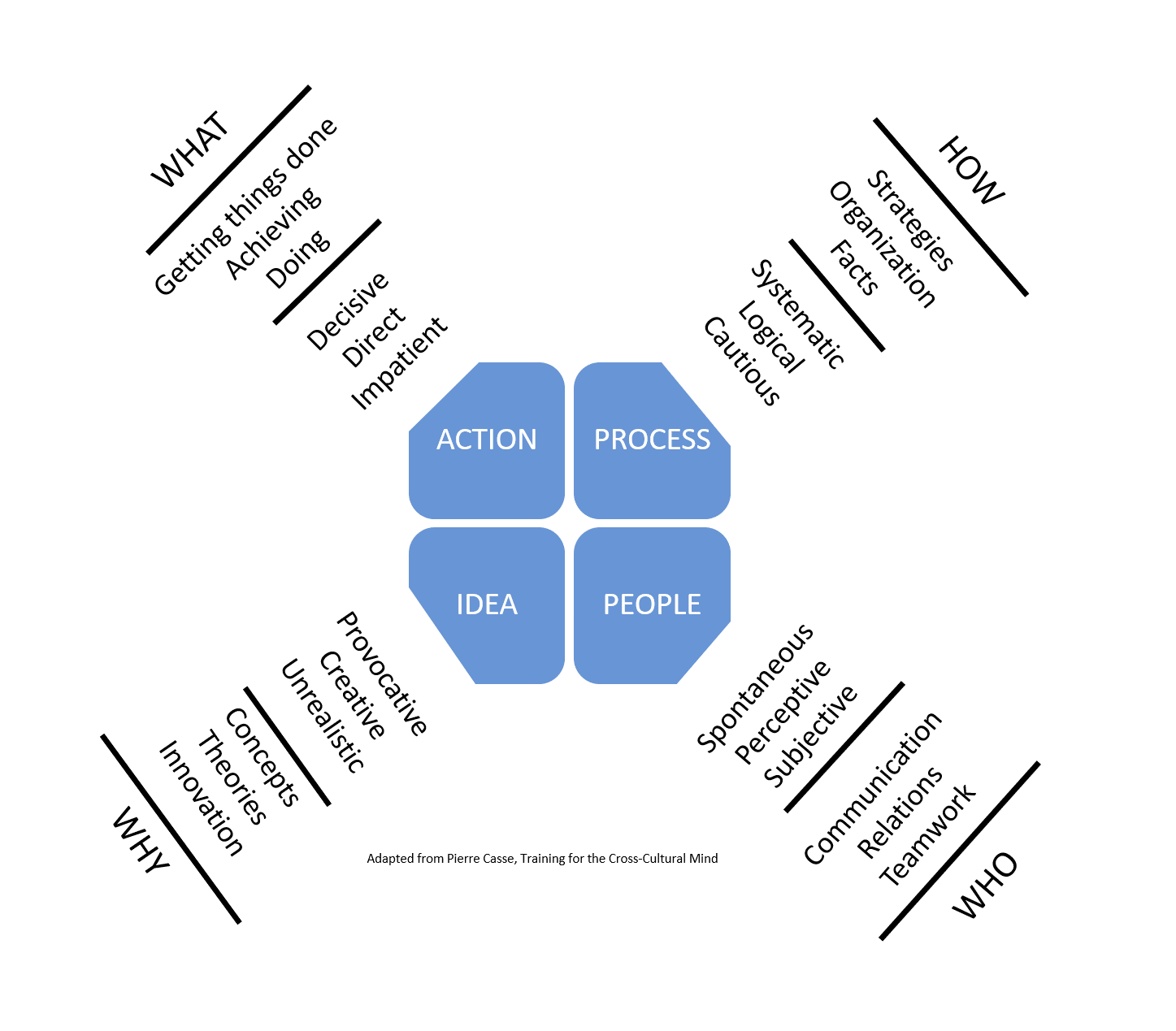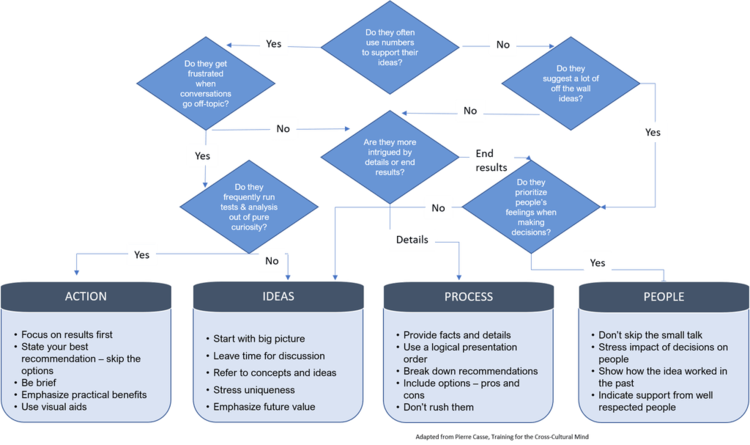
Communication is the key to success in ……. just about everything. But if you’re looking to have a successful career, it’s a foundational skill that you need to master. This blog series will take a look at three aspects of communication.
Communication style heavily influences what we focus on when speaking and listening. Understanding your own style, and learning to adapt to other styles, can help you to be heard and understood when it matters most.
There are too many elements to effective communication to just leave it to chance. Building a communication system can ensure you have all the bases covered.
Finally, effective communication is collaborative and interactive. The importance of listening can’t be overemphasized. The third blog will focus on engaged listening.
4 communication styles
Now, let’s talk about communication styles. According to Pierre Casse1, there are four basic communication styles. Each style correlates to a basic value orientation: action, process, people and ideas. These styles can be found in all cultures and indeed, in all people. Realistically, even though we are capable of using all four styles, we tend to have a dominant style which we are more comfortable with. That’s the style we usually revert to under pressure. Our preferred style is influenced by our personality, cultural background, past experiences, as well as the present context.
Each style has particularities which impacts the types of content the person focuses on. These are usually associated with specific personality traits.
Action: the action-oriented communicator is focused on results and performance. They want to see and hear about achievements and actions to overcome challenges. They tend to be direct, quick to move from one topic to another, pragmatic and impatient. They need to keep things moving.
Process: the process-oriented communicator is focused on facts, procedures, details and proof. They tend to be more systematic and logical, moving forward with caution. They want to see the plan in all its nitty gritty detail.
People: the people-oriented communicator is focused on feelings, motivations, people and relationships in general. They tend to be perceptive and emotional, more sensitive and spontaneous. They need to know why and feel assured that people have what they need.
Ideas: the idea-oriented communicator is focused on concepts and vision. They are creative and intrigued with new ways of doing things. They care about possibilities not details. They can be provocative and charismatic but also ego-centric. They prefer to focus on the big picture.
Assess your communication style
The first step to mastering different communication styles is to determine your own preferred style. Pierre Casse’s designed a simple assessment to do that. Take 10 minutes to do the assessment and find out what your preferred style is.
Now that you know your style, you can start thinking about ways to adapt your communication to other styles. I still remember the difficulties I had with one of my bosses. He was a big idea guy. I tend to be people and process oriented. I was constantly getting into the details – after all, they are IMPORTANT! He was constantly frustrated and uninterested. Until I learned how to focus less on the details (and truth be told, I never completely got there), I had a hard time keeping his attention.
Learn to adapt to other styles
The image below shows some simple questions you can use to identify someone’s communication style, as well as tips on working with the different styles. Start noticing the different styles of your key stakeholders. These tips are great for preparing a conversation or presentation with someone who has a different style. But you can also practice. Find a colleague or friend with a different style than yours and spend some time practicing. You’ll get more comfortable over time.

Communication style is only one element in effective communication. Knowing what type of information people are most interested in is a great start. But you need to identify critical stakeholders and get to know even more about who your audience is: how they prefer to consume information, where they get their information, and more.
Get more blogs in this series about effective communication from To the Lighthouse : effective listening, creating a communication framework and the fine line between passionate and pushy.
1 Pierre Casse, Training for the Cross-Cultural Mind, 1981, SETAR

